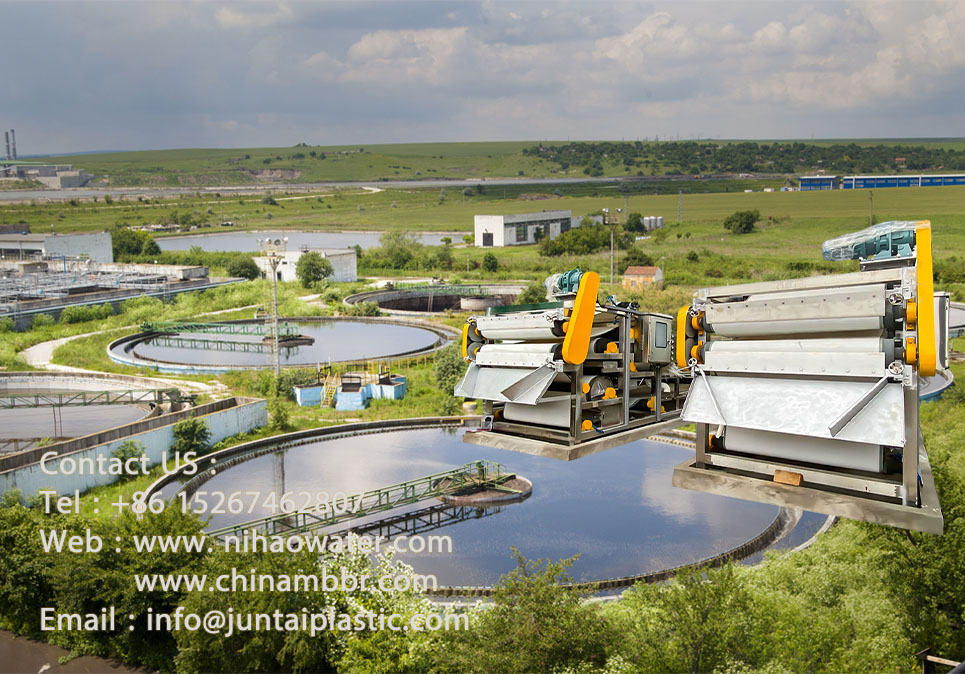 +86-15267462807
+86-15267462807
Phosphorus is a vital nutrient, but its excess in waterways can cause significant environmental problems. Here at Nihao Water, a trusted provider of plastic water treatment media, we're dedicated to helping you understand and implement effective phosphorus removal methods.
This widely used method involves adding metal salts, like aluminum or iron, to wastewater. These salts react with phosphorus to form insoluble precipitates that settle and are removed during sludge separation processes.
The Chemistry Behind It:
Metal Salts as Heroes: The magic lies in adding metal salts, most commonly alum (aluminum sulfate) or ferric salts (iron chloride or sulfate) to the wastewater.
Reaction and Precipitation: These metal salts react with dissolved phosphate (PO4³⁻) in the water to form insoluble metal-phosphate complexes.
Settling and Removal: The formed precipitates are heavier than water and settle out during clarification. The clarified water is then separated from the sludge containing the removed phosphorus.
This approach utilizes specific bacteria (polyphosphate accumulating organisms or PAOs) that absorb and store phosphorus within their cells. The bacteria are then separated from the treated water through settling or filtration.
In an oxygen-limited environment (anoxic or anaerobic), PAOs readily absorb readily biodegradable organic matter from the wastewater.
(Aerobic Stage): When oxygen is reintroduced (aerobic stage), PAOs utilize the stored organic matter for energy. As a bonus, under these aerobic conditions, PAOs also take up and store much more phosphorus than they need for their basic functions.
The PAOs, laden with phosphorus, are then separated from the treated water through settling or filtration processes, effectively removing phosphorus from the wastewater.
This method combines biological phosphorus removal with additional processes to enhance its effectiveness. Techniques like enhanced biological phosphorus removal (EBPR) create conditions favoring PAOs, leading to increased phosphorus uptake.
Biological Phosphorus Removal (EBPR): This is the most common advanced technique. EBPR creates dedicated zones within the treatment system. An anoxic zone promotes organic matter uptake by PAOs, while an aerobic zone optimizes "luxury uptake."
Selector Technologies: These methods separate PAOs from other bacteria, allowing for their preferential growth and activity. Techniques like anaerobic/aerobic selector basins or alternating anaerobic/aerobic reactors fall under this category.
Anaerobic Acclimation: This approach preconditions the wastewater by subjecting it to an extended anaerobic stage. This encourages the growth of specific bacteria that produce readily biodegradable organic matter, which PAOs readily consume during the feast stage, enhancing phosphorus uptake.
| Treatment Method | Advantages | Disadvantages |
| Chemical Precipitation | * Reliable and Effective: Achieves high removal rates | * Sludge Production: Generates significant amounts of sludge requiring disposal |
| * Relatively Simple Technology: Uses readily available chemicals and equipment | * Chemical Costs: Can be expensive for treating large volumes | |
| * Limited Phosphorus Recovery: Phosphorus in sludge is not readily recoverable | ||
| Biological Phosphorus Removal (Bio-P) | * Sustainable and Cost-Effective: Utilizes readily available organic matter | * Process Optimization: Requires careful control and skilled operation |
| * Reduced Sludge Production: Less sludge compared to chemical precipitation | * Slower Startup: Establishing PAO population takes time | |
| * Potential for Phosphorus Recovery: Phosphorus can be potentially recovered | * Wastewater Characteristics: Effectiveness can be influenced by wastewater composition | |
| Advanced Biological Treatment | * Higher Removal Efficiency: Achieves very high removal rates | * Increased Complexity: Requires complex design and operational expertise |
| * Improved Process Stability: More robust system, less susceptible to fluctuations | * Higher Costs: May involve additional infrastructure and process control | |
| * Potential for Phosphorus Recovery: May offer easier phosphorus recovery | * Wastewater Compatibility: Effectiveness can be influenced by wastewater composition |

The most suitable method for your application depends on several factors, including:
Desired phosphorus removal level
Wastewater characteristics
Cost considerations
Available infrastructure
Nihao Water: Your Partner in Wastewater Treatment
At Nihao Water, we offer a comprehensive range of plastic water treatment media products solutions, including MBBR biofilter media, disc diffusers, and complete treatment plants. Our team of experts can help you assess your specific needs and recommend the most effective phosphorus removal strategy for your wastewater.